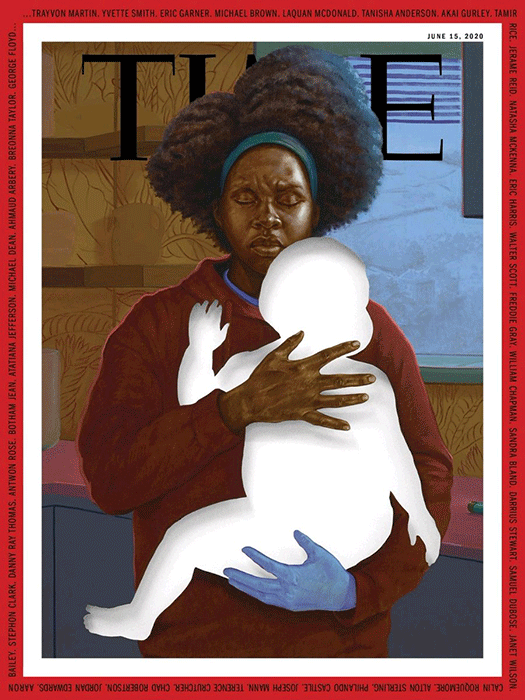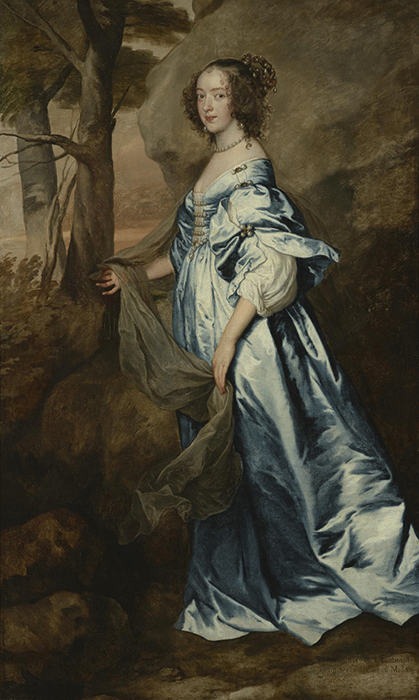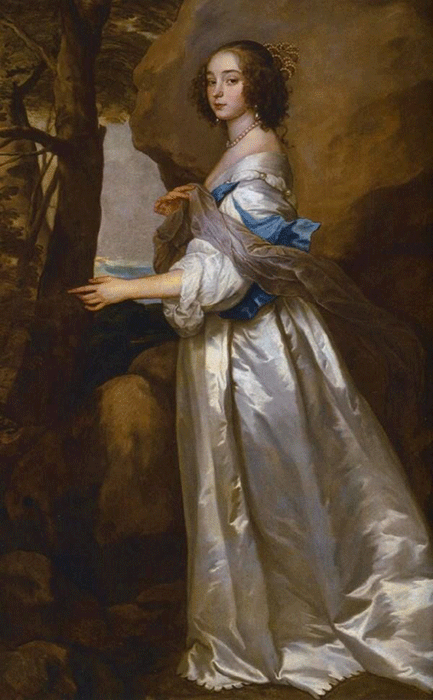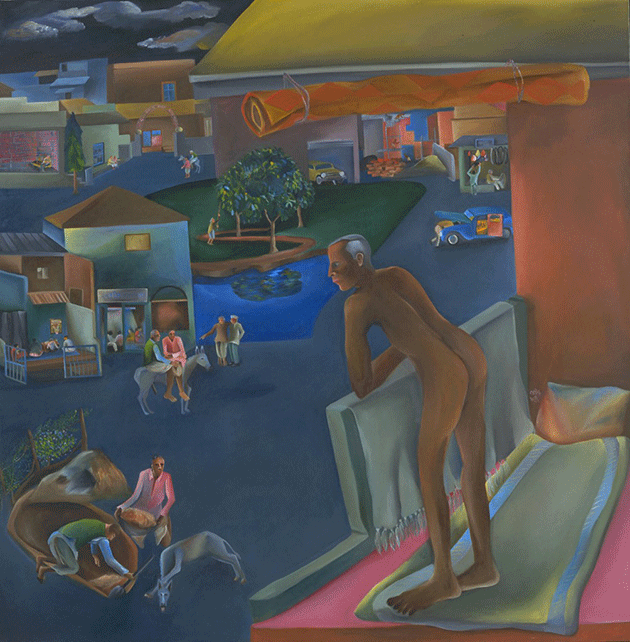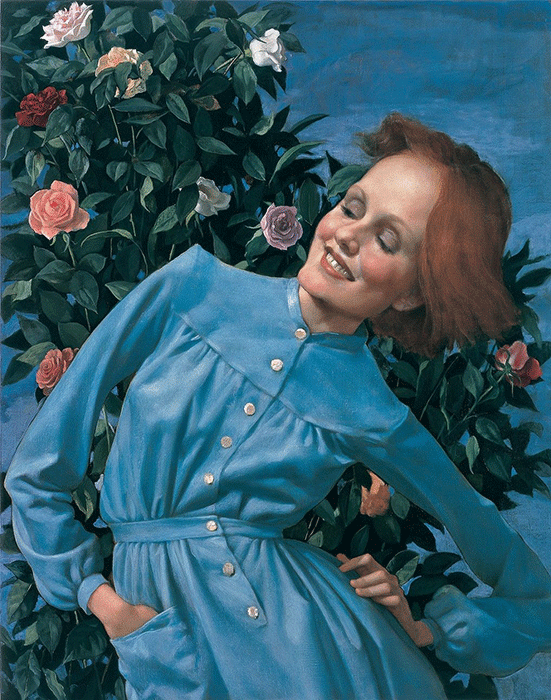Contemporary Art
14 Oct 2006, 7pm
London
1
Anselm Reyle
Untitled
Estimate £25,000 - 35,000 ♠
Sold for £31,200
Create your first list.
Select an existing list or create a new list to share and manage lots you follow.
2
Paul Pfeiffer
Four Horsemen of the Apocalypse (11)
Estimate £15,000 - 20,000 ‡
Sold for £16,800
Create your first list.
Select an existing list or create a new list to share and manage lots you follow.
3
Tom Friedman
Untitled
Estimate £30,000 - 40,000 ‡
Sold for £34,800
Create your first list.
Select an existing list or create a new list to share and manage lots you follow.
4
Johannes Kahrs
Untitled
Estimate £30,000 - 40,000 ‡♠
Sold for £78,000
Create your first list.
Select an existing list or create a new list to share and manage lots you follow.
5
Ronan and Erwan Bouroullec
"Honda" vase
Estimate £10,000 - 15,000 ♠
Sold for £18,000
Create your first list.
Select an existing list or create a new list to share and manage lots you follow.
6
Rosemarie Trockel
Untitled (Homage to Bridget Riley)
Estimate £60,000 - 80,000 ‡♠
Sold for £108,000
Create your first list.
Select an existing list or create a new list to share and manage lots you follow.
7
Ross Lovegrove
Prototype "Liquid Bench"
Estimate £70,000 - 90,000 ♠
Sold for £120,000
Create your first list.
Select an existing list or create a new list to share and manage lots you follow.
8
Christopher Wool
Untitled (Riot)
Estimate £80,000 - 120,000
Sold for £198,400
Create your first list.
Select an existing list or create a new list to share and manage lots you follow.
9
Marlene Dumas
Wrong Title
Estimate £180,000 - 250,000 ‡
Sold for £232,000
Create your first list.
Select an existing list or create a new list to share and manage lots you follow.
10
Richard Prince
#7/ Just Married
Estimate £120,000 - 180,000 ‡
Sold for £220,800
Create your first list.
Select an existing list or create a new list to share and manage lots you follow.
11
Franz West
Untitled
Estimate £40,000 - 60,000 ‡♠
Sold for £84,000
Create your first list.
Select an existing list or create a new list to share and manage lots you follow.
12
Rudolf Stingel
Untitled
Estimate £50,000 - 70,000 ♠
Sold for £120,000
Create your first list.
Select an existing list or create a new list to share and manage lots you follow.
13
Tokujin Yoshioka
"PANE" chair
Estimate £10,000 - 15,000 Ω
Sold for £15,600
Create your first list.
Select an existing list or create a new list to share and manage lots you follow.
14
Huang Yong Ping
Le Jugement Dernier
Estimate £40,000 - 60,000
Sold for £60,000
Create your first list.
Select an existing list or create a new list to share and manage lots you follow.
15
Damien Hirst
Biphenol
Estimate £80,000 - 120,000 ‡♠
Sold for £153,600
Create your first list.
Select an existing list or create a new list to share and manage lots you follow.
16
Gilbert & George
Dick Seed (in 9 parts)
Estimate £60,000 - 80,000 ‡♠
Create your first list.
Select an existing list or create a new list to share and manage lots you follow.
17
Tim Noble and Sue Webster
$
Estimate £150,000 - 200,000 Ω♠
Sold for £187,200
Create your first list.
Select an existing list or create a new list to share and manage lots you follow.
18
Daniel Richter
Rede an die Nation
Estimate £90,000 - 120,000 ♠
Sold for £187,200
Create your first list.
Select an existing list or create a new list to share and manage lots you follow.
19
Wolfgang Tillmans
Eight works: (i) 69 Love Songs, 2000; (ii) Temelhof, 1992; (iii) Billie Ray Martin, 1999; (iv) Flowerhead, 2001; (v) Faltenwurf (Rot), 1996; (vi) Adam Head Down, 1991; (vii) London Barbican, 1996; (viii) Still Life Guuys Inn Road I, 1999
Estimate £30,000 - 40,000 ‡♠
Sold for £36,000
Create your first list.
Select an existing list or create a new list to share and manage lots you follow.
20
Chen Zhen
Un Village sans frontiers
Estimate £30,000 - 50,000
Sold for £50,400
Create your first list.
Select an existing list or create a new list to share and manage lots you follow.
21
Piotr Uklański
Dance floor
Estimate £100,000 - 150,000 ‡♠
Sold for £96,000
Create your first list.
Select an existing list or create a new list to share and manage lots you follow.
22
Franz Ackermann
Transall Delivering a Piece of My Hometown
Estimate £150,000 - 200,000 ‡♠
Sold for £153,600
Create your first list.
Select an existing list or create a new list to share and manage lots you follow.
23
Marc Newson
"Event Horizon" table
Estimate £160,000 - 180,000 ≠†
Sold for £176,000
Create your first list.
Select an existing list or create a new list to share and manage lots you follow.
24
Fang Lijun
2002
Estimate £250,000 - 350,000
Sold for £478,400
Create your first list.
Select an existing list or create a new list to share and manage lots you follow.
25
Elizabeth Peyton
Princes William and Harry September 1999
Estimate £300,000 - 400,000 ‡
Sold for £433,600
Create your first list.
Select an existing list or create a new list to share and manage lots you follow.
26
Piotr Uklański
The Nazis
Estimate £250,000 - 350,000 ‡♠
Sold for £568,000
Create your first list.
Select an existing list or create a new list to share and manage lots you follow.
27
Matthew Barney
Cremaster 2: The Queen's Exposition
Estimate £100,000 - 150,000 ‡
Sold for £108,000
Create your first list.
Select an existing list or create a new list to share and manage lots you follow.
28
Karen Kilimnik
Barbe Dmitrievna Margassov, Madame Rimsky-Korsakov, 1864, in the Limelight/Cynthia a Snowflake in the Nutcracker
Estimate £120,000 - 150,000 ‡
Sold for £142,400
Create your first list.
Select an existing list or create a new list to share and manage lots you follow.
29
Ghada Amer
Noir 2
Estimate £30,000 - 40,000 ‡
Sold for £62,400
Create your first list.
Select an existing list or create a new list to share and manage lots you follow.
30
Bill Viola
Eternal Return
Estimate £350,000 - 450,000 ‡
Sold for £377,600
Create your first list.
Select an existing list or create a new list to share and manage lots you follow.
31
Rachel Whiteread
Untitled (Trafalgar Square Plinth)
Estimate £80,000 - 120,000 ‡♠
Sold for £78,000
Create your first list.
Select an existing list or create a new list to share and manage lots you follow.
32
Sarah Lucas
The Law
Estimate £10,000 - 15,000 ‡♠
Sold for £22,800
Create your first list.
Select an existing list or create a new list to share and manage lots you follow.
33
Darren Almond
Time and Time again
Estimate £20,000 - 30,000 ‡♠
Sold for £33,600
Create your first list.
Select an existing list or create a new list to share and manage lots you follow.
34
Mona Hatoum
Hair Necklace
Estimate £30,000 - 40,000 ‡♠
Sold for £60,000
Create your first list.
Select an existing list or create a new list to share and manage lots you follow.
35
Chris Ofili
Rarra Azizah Dilberta
Estimate £300,000 - 400,000 ‡♠
Sold for £344,000
Create your first list.
Select an existing list or create a new list to share and manage lots you follow.
36
Zhang Xiaogang
Blood Line Series: No. 16
Estimate £60,000 - 80,000
Sold for £164,800
Create your first list.
Select an existing list or create a new list to share and manage lots you follow.
37
Mariko Mori
Mirror of Water
Estimate £100,000 - 150,000
Create your first list.
Select an existing list or create a new list to share and manage lots you follow.
38
Ron Arad
Unique "B.O.O.P" coffee table
Estimate £40,000 - 60,000
Sold for £78,000
Create your first list.
Select an existing list or create a new list to share and manage lots you follow.
39
Takashi Murakami
Scarlet Heart
Estimate £150,000 - 200,000
Create your first list.
Select an existing list or create a new list to share and manage lots you follow.
40
Richard Prince
So What Else is New
Estimate £300,000 - 400,000 ‡
Sold for £433,600
Create your first list.
Select an existing list or create a new list to share and manage lots you follow.
41
Mike Kelley
The Sun Collapses Taking with it the Grid of the Ordered Universe
Estimate £200,000 - 300,000
Sold for £254,400
Create your first list.
Select an existing list or create a new list to share and manage lots you follow.
42
Paul McCarthy
Dirty Nose (Propo)
Estimate £10,000 - 15,000 ‡
Sold for £45,600
Create your first list.
Select an existing list or create a new list to share and manage lots you follow.
43
George Condo
Untitled (Sir Alfred Chipmunk)
Estimate £50,000 - 70,000
Sold for £72,000
Create your first list.
Select an existing list or create a new list to share and manage lots you follow.
44
Jack Pierson
Estimate £50,000 - 70,000
Sold for £90,000
Create your first list.
Select an existing list or create a new list to share and manage lots you follow.
45
Christopher Wool
Untitled (P58)
Estimate £150,000 - 200,000
Sold for £265,600
Create your first list.
Select an existing list or create a new list to share and manage lots you follow.
46
Maurizio Cattelan
Lift
Estimate £200,000 - 300,000 ♠
Sold for £187,200
Create your first list.
Select an existing list or create a new list to share and manage lots you follow.
47
Ronan and Erwan Bouroullec
"Console with Vase and Bowl"
Estimate £20,000 - 25,000 ≠♠†
Sold for £16,800
Create your first list.
Select an existing list or create a new list to share and manage lots you follow.
48
Richard Long
Georgia Granite Line
Estimate £30,000 - 40,000 ♠
Sold for £62,400
Create your first list.
Select an existing list or create a new list to share and manage lots you follow.
49
Franz West
Schöner Wohnen
Estimate £60,000 - 80,000 ‡♠
Sold for £72,000
Create your first list.
Select an existing list or create a new list to share and manage lots you follow.
50
Gregor Schneider
Nacht (Night), Totes Haus Ur
Estimate £20,000 - 30,000 ♠
Sold for £62,400
Create your first list.
Select an existing list or create a new list to share and manage lots you follow.
51
Daniel Richter
Irren Menschlich
Estimate £70,000 - 90,000 ♠
Create your first list.
Select an existing list or create a new list to share and manage lots you follow.
52
Albert Oehlen
Leuchter
Estimate £50,000 - 70,000 ♠
Sold for £96,000
Create your first list.
Select an existing list or create a new list to share and manage lots you follow.
53
Andreas Gursky
Athens
Estimate £120,000 - 180,000 ‡♠
Sold for £220,800
Create your first list.
Select an existing list or create a new list to share and manage lots you follow.
54
Martin Kippenberger
Frau Mit Viel Zeit
Estimate £400,000 - 600,000 ‡
Sold for £433,600
Create your first list.
Select an existing list or create a new list to share and manage lots you follow.
55
Eberhard Havekost
Platanen 1
Estimate £70,000 - 90,000 ♠
Sold for £72,000
Create your first list.
Select an existing list or create a new list to share and manage lots you follow.
56
Shiro Kuramata
Acrylic stool
Estimate £18,000 - 22,000
Sold for £26,400
Create your first list.
Select an existing list or create a new list to share and manage lots you follow.
57
Fang Lijun
2004.3.7
Estimate £25,000 - 35,000
Sold for £30,000
Create your first list.
Select an existing list or create a new list to share and manage lots you follow.
58
Tom Friedman
Untitled
Estimate £40,000 - 60,000 ‡
Sold for £48,000
Create your first list.
Select an existing list or create a new list to share and manage lots you follow.
59
Maurizio Cattelan
Joseph Beuys' Suit
Estimate £20,000 - 30,000 ♠
Sold for £33,600
Create your first list.
Select an existing list or create a new list to share and manage lots you follow.
60
Franz West
Sessel
Estimate £15,000 - 20,000 ♠
Sold for £36,000
Create your first list.
Select an existing list or create a new list to share and manage lots you follow.
61
Magnus Plessen
Untitled
Estimate £30,000 - 40,000 ‡♠
Sold for £42,000
Create your first list.
Select an existing list or create a new list to share and manage lots you follow.
62
Thomas Hirschhorn
Abstrait Relief No. 548 (Nietzche)
Estimate £35,000 - 45,000 ‡
Sold for £84,000
Create your first list.
Select an existing list or create a new list to share and manage lots you follow.
63
Thomas Struth
Paradise 1 (Pilgrim Sands), Daintree/ Australia
Estimate £25,000 - 35,000 ‡♠
Sold for £50,400
Create your first list.
Select an existing list or create a new list to share and manage lots you follow.
64
Andreas Gursky
Heidelberger Ost
Estimate £60,000 - 80,000 ‡♠
Sold for £72,000
Create your first list.
Select an existing list or create a new list to share and manage lots you follow.
65
Martin Kippenberger
M.K.N.Y.
Estimate £50,000 - 70,000
Sold for £78,000
Create your first list.
Select an existing list or create a new list to share and manage lots you follow.
66
Anselm Kiefer
Geburt der Sonne (Birth of the Sun)
Estimate £120,000 - 180,000 ♠
Create your first list.
Select an existing list or create a new list to share and manage lots you follow.
67
Jörg Immendorff
Malerstamm André
Estimate £40,000 - 60,000 ♠
Sold for £54,000
Create your first list.
Select an existing list or create a new list to share and manage lots you follow.
68
Günther Förg
Untitled
Estimate £10,000 - 15,000 ♠
Sold for £66,000
Create your first list.
Select an existing list or create a new list to share and manage lots you follow.
69
Tobias Rehberger
Cutting Library
Estimate £20,000 - 30,000 ‡♠
Sold for £16,800
Create your first list.
Select an existing list or create a new list to share and manage lots you follow.
70
Wim Delvoye
St. Stephanus III
Estimate £35,000 - 45,000 ♠
Sold for £69,600
Create your first list.
Select an existing list or create a new list to share and manage lots you follow.
71
Yang Shaobin
2002-12, No. 1
Estimate £40,000 - 60,000
Sold for £48,000
Create your first list.
Select an existing list or create a new list to share and manage lots you follow.
72
Maurizio Cattelan
Mother
Estimate £20,000 - 30,000 ♠
Sold for £45,600
Create your first list.
Select an existing list or create a new list to share and manage lots you follow.
73
Hiroshi Sugimoto
Elizabeth II
Estimate £20,000 - 30,000 ‡
Sold for £72,000
Create your first list.
Select an existing list or create a new list to share and manage lots you follow.
